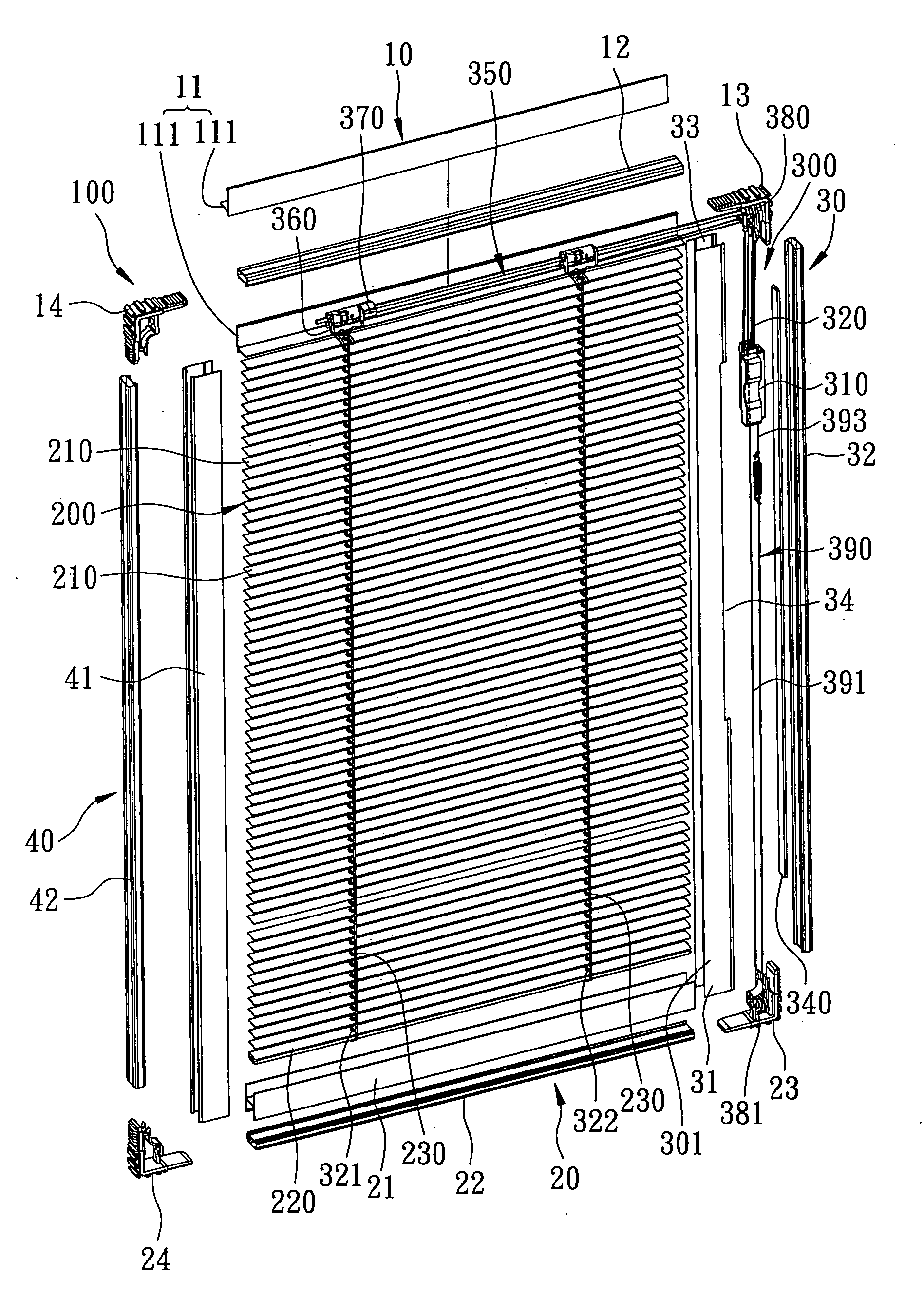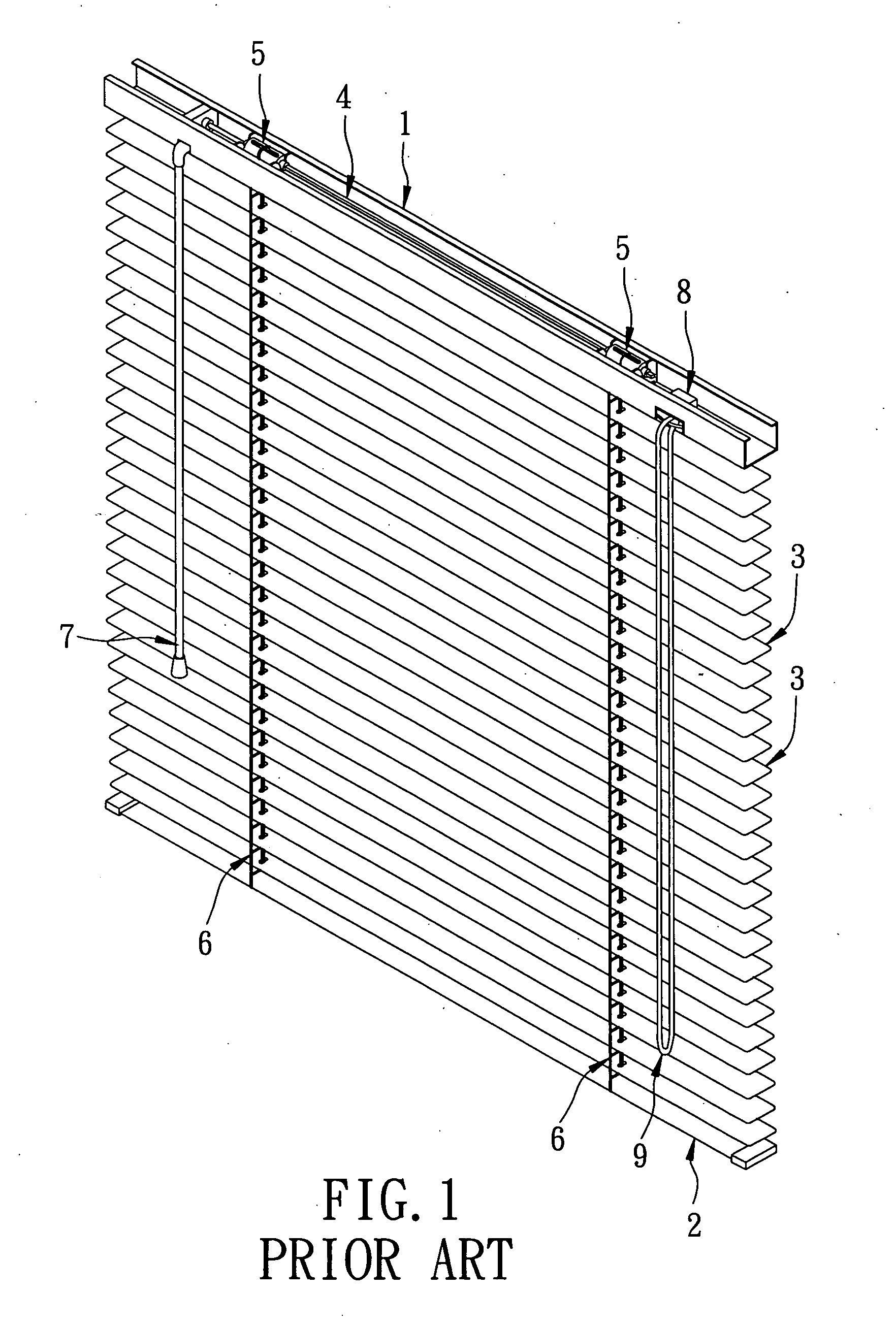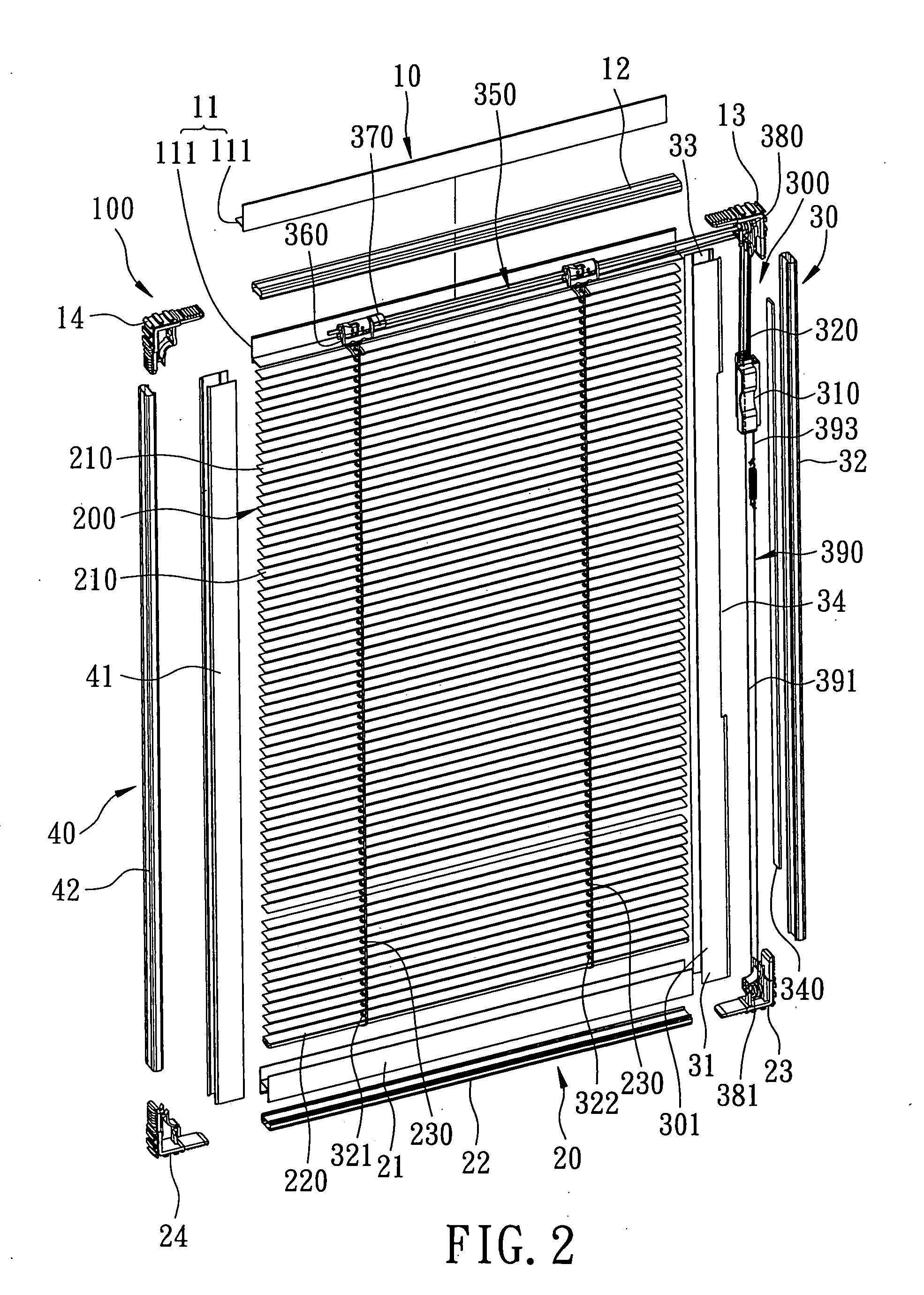Window blind assembly having an outer frame
a technology of window blinds and outer frames, which is applied in the field of window blinds, can solve the problems of rendering conventional window blinds inconvenient to use, and achieve the effect of raising or lowering the slats
- Summary
- Abstract
- Description
- Claims
- Application Information
AI Technical Summary
Benefits of technology
Problems solved by technology
Method used
Image
Examples
Embodiment Construction
[0035]Before the present invention is described in greater detail, it should be noted that like elements are denoted by the same reference numerals throughout the disclosure.
[0036]Referring to FIGS. 2 to 17, the first preferred embodiment of a window blind assembly according to the present invention is adapted to be sandwiched between a front transparent plate 500 and a rear transparent plate 600. The front transparent plate 500 has two vertically extending lateral ends 520, 530. In this embodiment, the front and rear transparent plates 500, 600 are made of glass. The front and rear transparent plates 500, 600 and the window blind assembly of the present invention can be positioned on a frame, such as a window frame 800, through two sets of retaining units 700.
[0037]The window blind assembly of the present invention comprises an outer frame 100, a blind unit 200, and a control device 300.
[0038]The outer frame 100 is adapted to be placed between the front and rear transparent plates ...
PUM
 Login to View More
Login to View More Abstract
Description
Claims
Application Information
 Login to View More
Login to View More - Generate Ideas
- Intellectual Property
- Life Sciences
- Materials
- Tech Scout
- Unparalleled Data Quality
- Higher Quality Content
- 60% Fewer Hallucinations
Browse by: Latest US Patents, China's latest patents, Technical Efficacy Thesaurus, Application Domain, Technology Topic, Popular Technical Reports.
© 2025 PatSnap. All rights reserved.Legal|Privacy policy|Modern Slavery Act Transparency Statement|Sitemap|About US| Contact US: help@patsnap.com



